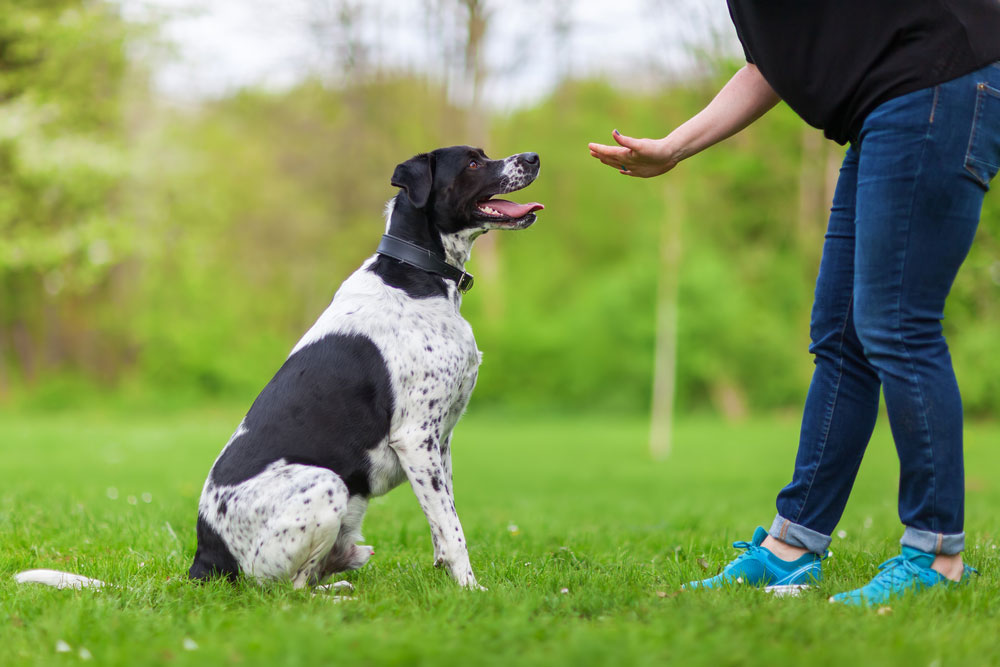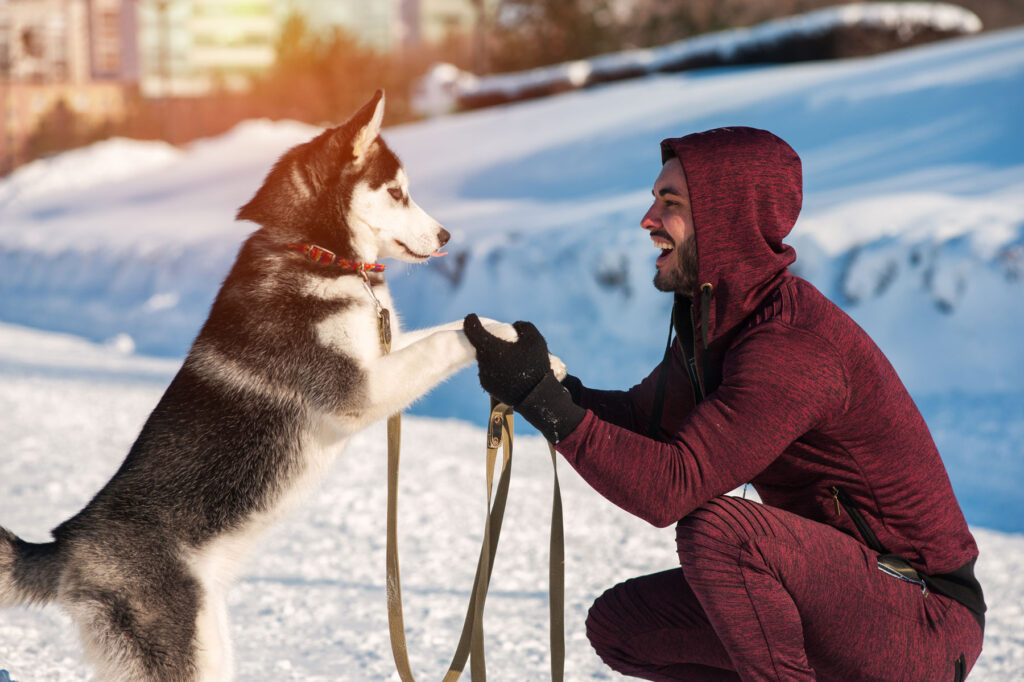Animal Welfare, Behavioral Issues In Pets, Dog Training
January Is National Train Your Dog Month, Here’s What You Need to Know About It!
National Train Your Dog Month is an initiative by the Association of Professional Dog Trainers to bring awareness to the importance of socialization and training. They selected the month of January as the National Train your Dog Month because most dogs are adopted during the holidays – especially during Christmas – which is why starting the new year off with sharing the fun ways to train a dog seems like an excellent way to go.
Did you know that most dogs are sent to animal shelters for behavior and training issues that could be easily solved with proper socialization and training? Ironically humans are the ones that cause animals to end up homeless! And our “Training Humans” series sets out to address this sad fact.
National Train Your Dog Month helps in promoting the importance as well as benefits of training dogs so that they turn into happy and healthy companions to you. In this blog post, we will go through everything you need to know about National Train Your Dog Month, the importance of training your furry friend and the Dos and Don’ts of training your dog.
A Quick Introduction: National Train Your Dog Month and the Association of Professional Dog Trainers
The Association of Professional Dog Trainers is a professional educational organization of dog trainers committed to becoming better trainers by using dog-friendly, positive methods based on sound scientific principles. The organization provides professional dog trainers with a respected voice as well as promoting caring relationships between dogs and people. The association also works to increase public awareness for dog-friendly training techniques.
The initiative of National Train Your Dog Month was started in 2010 to bring awareness to the importance of training and socialization. And, to also inform the public that training a dog can be easy, fun and extremely rewarding! The eighth annual National Train Your Dog Month promotes training your family dog with everyday manners. The aim this year is to share tips and tricks for teaching your dog the basic commands: sit, down, stay, wait, coming when called, not to mention “potty training”.
Why Even Train Your Dog!?: The Importance of Training Your Furry Friend
Humans can’t speak dog, and vice versa which is why you need to learn to communicate with the newest member of your family in an effective manner which they can understand. Puppies aren’t born to live in your home.
Dogs are pretty self-sufficient when it comes to living in the wild and know all they need to about how to survive. But, you need to teach your dog how to live in a house! Since dogs are a separate species from people, they’ve got their own special needs and natural instincts. These fur babies communicate differently than we do, and their normal behaviors are counter to our own. When we bring a puppy (or an older dog) into our lives, we are asking them to change a lot about their natural instincts. Not only do we need to teach a puppy how to fit into our lives, but also need to teach ourselves about their needs. This is important because we, too, need to learn to adjust and accommodate our expectations to make the best possible situation for everyone. If we take training lightly and choose not to train our furry companions, or ourselves, everyone ends up frustrated and many animals then end up in shelters.
Training is an important part of any dog’s life and is crucial for various reasons.
Training provides your dog with the necessary mental stimulation which helps him or her to be happy. When you combine training with exercise, your furry friend (and you) will be physically as well as mentally tired at the end and should sleep well! Reward-based and dog-friendly training methods are the best because your dog is set up to succeed and is rewarded for demonstrating ‘good’ behavior. This type of training is rather enjoyable and rewarding for you and your dog and enhances the relationship between you.
Poor Training Ends Up With Dogs in Shelters!
Did you know that hundreds of thousands of dogs have been turned in to animal shelters because of poor training? The behavioral issues that dogs have can often be easily addressed using the right training tools. First-time dog owners feel intimidated when it comes to training a dog and don’t have the right resources to do so. So, a high percentage of furry companions adopted and bought during the holidays end up in shelters. Dogs deserve a loving and caring home and an owner who is dedicated to training them the right way. National Train Your Dog Month is an initiative to provide pet owners with the right resources to train their fur babies and have a long and beautiful relationship with them. But we firmly believe that good training is a year-round process, so don’t let the training stop!
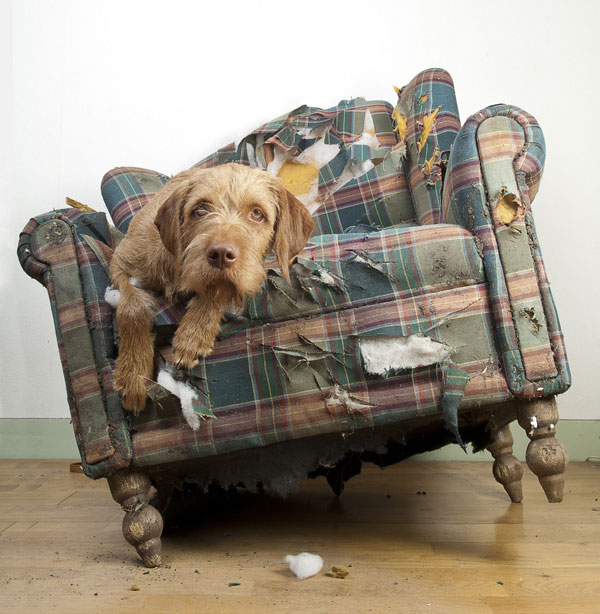
Dog-Friendly Way of Training Your Furry Friend: Psychology Hacks!
When it comes to training a dog, Psychology has a lot of insights and ‘hacks’ to offer. In this section of the blog, we will be going through a few concepts of Psychology that’ll help you become a better and more effective dog trainer.
Ivan Pavlov was a Nobel prize-winning physiologist who conducted research on the workings of the human digestive system. Before the human trials, he carried out trial research on dogs and found something that he dedicated his life to. Pavlov’s subjects were dogs and these canines used to start drooling in anticipation of food when they sounded the bell which announced the feeding time. With time, the dogs even started to drool at the sound of the bell, even when food didn’t follow. That signified that even though the food wasn’t physically present, the dogs had conditioned themselves to the sound of the bell because it was always followed by food. And, that’s what we now call Classical Conditioning.
The concepts of Classical Conditioning and that of Instrumental Conditioning are now widely used to train all sorts of animals (even humans)! By sharing these basic concepts of Psychology, we hope to give you a better understanding of how to train your dog easier and on a deeper level.
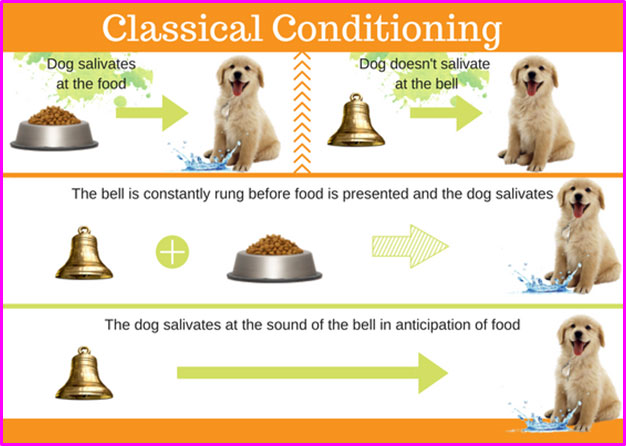
To understand the concept, there are a few things to be aware of:
- An unconditioned stimulus is something that activates a natural response. In this case, the treat acts as an unconditioned stimulus as it activates your dog’s salivary glands
- A conditioned stimulus is something that is coupled with the unconditioned stimulus or UCS until it activates the same response In this case, since the bell is accompanied with the food, it acquires the same response to the food, which is why the dog salivates in anticipation of food when the bell is rung
- An unconditioned response occurs on a natural or biological level For example, humans as well as dogs salivate when they see food in anticipation of it, we naturally blink our eyes when a foreign substance comes close, etc.
- The conditioned response is acquired through learning when you pair the unconditioned stimulus with the conditioned one. In this example, the bell is associated with food for a long period of time, which is enough for the dog to understand that the bell will be followed by the food
If you understand the workings of conditioning, it’ll be easier for you to grasp the concept of training your dog as well, as the vital importance of consistency in your approach.
Classical Conditioning and Training Your Puppy
Classical conditioning is one of the most common techniques used to teach a dog basic and complicated commands alike. But, there’s a catch. Did you know that your furry friend can easily ‘unlearn’ commands? In fact, this is one of the most common problems that dog owners face, because their dog seems to unlearn a command as fast as he learns it!
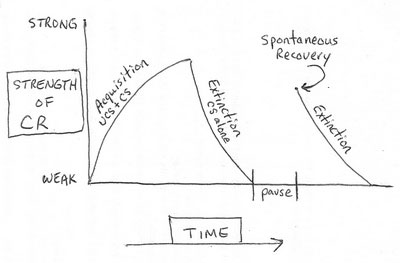
In above graph, you can see how it doesn’t take a lot of time to acquire a conditioned response. However, you can also see how it doesn’t also take time for extinction to take place as well. Acquisition is when your dog understands that the food is associated with the bell. So, he starts salivating when the bell is rung. However, the process of extinction (unlearning) takes place when you keep on ringing the bell without giving your dog the food or treat. This is when your dog realizes that the bell isn’t followed by the food, so there’s basically no need to salivate.
Reinforcements and Instrumental Conditioning
Instrumental Conditioning has been used widely in training animals and is a technique used by many experts out there. And, you know what? It’s also been used on you since your childhood!
Let’s Talk About Reinforcement
In simple words, reinforcement is a consequence or outcome associated with a type of behavior which generally increases the chances of it repeating. It is something that basically helps increase the probability of a response occurring again. So, if you give your puppy a treat when he’s a good boy and he sits on command, you’re giving him positive reinforcement. That treat will increase the probability of your dog sitting again when you command him to.

The Two Types of Reinforcement
You may be aware of the concept of positive reinforcement, but there are actually two types of reinforcements that you need to know about:
- Positive reinforcement: A favorable consequence of acceptable behavior
- Negative reinforcement: An unfavorable stimulus removed when acceptable behavior occurs
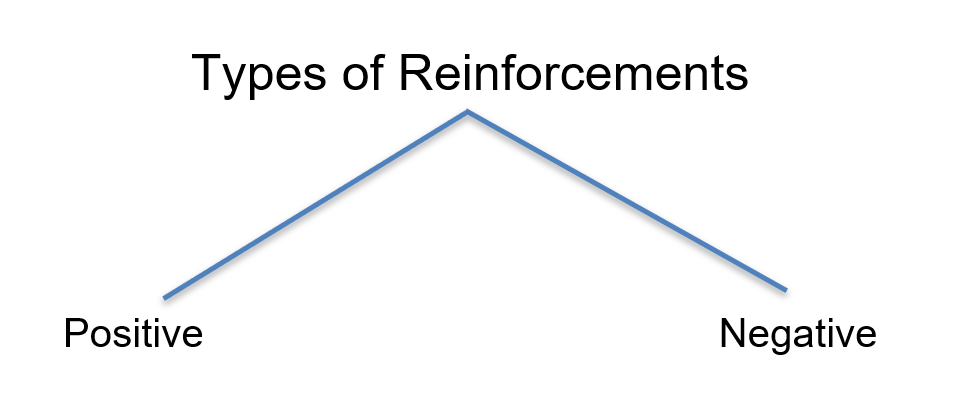
Positive Reinforcement: The Main Motivator
Did you ever get something you wanted after getting good grades in school? That was positive reinforcement! Basically, positive reinforcement means that you simply ‘reward’ your puppy with something that he’ll love after he does something desirable – like relieving himself outside the house or sitting on command. Positive reinforcement can be anything that your puppy likes such as your affection, a treat, a new chew toy, etc.
Negative Reinforcement
Did you ever get grounded when you were a teenager? That’s negative reinforcement. The concept includes two main things:
- Removal of aversive stimuli
- Removal of positive stimuli
In the case of the removal of an aversive stimulus, always know that you are subtracting something unpleasant from your puppy’s environment. For example, removing your puppy from ‘time out’ when he’s been a good boy. However, in the case of the removal of a positive stimulus… Suppose you left your puppy home alone for a few hours and came back to find that your puppy chewed all of your nice shoes. Now, you can take away your pup’s favorite chew toy for a few hours as punishment.
Do’s and Don’ts for Training Your Furry Friend
Once you understand the underlying psychology of how to train your dog, you will be a more effective trainer and a far better puppy parent! But there are still certain do’s and don’ts of training that you should be aware of.
Do’s: Things You Should be Doing More Of…
- Focus on your dog and understand his natural instincts – never fool or tease him with the commands you teach him
- Be consistent with the reward and give it to him only when he’s completed the task
- Be kind and patient with your dog – training takes time and a poorly trained dog reflects more on the skills of the trainer
- Allow your dog time to take in or understand the command and follow it. He may not understand it immediately and that is fine, he’ll get it eventually
- Once your dog has mastered a command, it’s time to practice it in different settings – like a busy street, among a crowd, etc. to ensure that your dog listens to you every time
- Reward your dog immediately after he completes a task
- Teach your dog one command at a time – don’t mix things up!
Don’ts: The Things You Should Avoid
- Don’t use your dog’s name in a negative way or to scold him as he’ll learn to associate his name with the scolding
- Don’t give him treats before he completes a task fully
- Don’t give attention to your dog or potentially reward him if he’s behaving badly
- Don’t allow your dog to get away with things he’s not supposed to
- Don’t ever hit your dog
- Don’t repeat a command continually and let him ignore it until you stop
The best treats
When choosing the best reward make it something they really like, whether that’s a healthy treat, their favorite toy or just a big cuddle from mom or dad
Conclusion: National Train Your Dog Month
Did you know that most dogs are sent to animal shelters for behavior and training issues that could be easily solved with proper socialization and training? National Train Your Dog Month is an initiative by the Association of Professional Dog Trainers to bring awareness to the importance of socialization and training. It promotes a strong and life-long relationship with our canine friends, which is one of the most rewarding relationships we can have. So, get on the training train and teach your dog all he need to know about how to be a very good boy (or girl!). You’ll both be happier for it. Have questions? Leave them in the comments, and we’ll get back to you as soon as possible! Until then, Happy Training!
